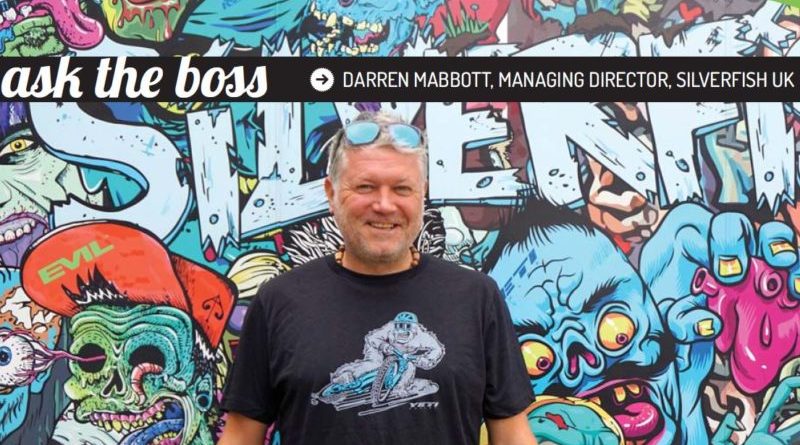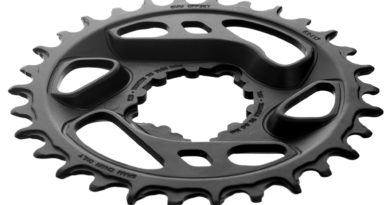Ask the boss: Silverfish’s Darren Mabbott talks lead times, model years and shops of the future
CI.N very often asks retailers and manufacturers their thoughts on the industry and its evolution, but what about the middlemen? This month we pin down Darren Mabbott, managing director at Silverfish UK to ask his thoughts on some topical trade discussions:
On bike shop numbers: Will the dip plateau and what might those left look like?
I think we’re approaching a plateau, though we may still see further reduction in shop numbers as consumers shift online.
A lot of new stores opened post-Olympics and during the impending road boom, but that never materialised on a sustainable level, so contraction was inevitable. We lost some long-term Silverfish customers last year, but so far this year we haven’t seen significant changes.
It’s certainly the most challenging time that I remember in my 25 years in the industry. We’re all having to work a lot harder for a lot less return.
What stores will look like moving forward is difficult to predict, but I would expect our strongest retailers to continue to thrive. These stores understand the need to offer a genuine retail experience, alongside a solid online offering. They are switched onto the importance of relationships, which includes maintaining or building mutually beneficial relationships with suppliers, focusing on building stronger ties with their own customer-base and creating a real sense of community around the shop. We have a number of key Silverfish customers who do this well and have become ‘cult’ stores.
On model years: How might the industry’s attitude change?
I’m not sure it will. Cycling products are evolving at an incredible rate and no brand wants to be left behind. Component manufacturers will continue to drive innovation and trickle down new technology, and bike manufacturers will continue to purchase from component manufacturers on a model year basis, which ultimately dictates product years to brands. My concern around this sits just as much with whether the technology being released is market ready as manufacturers race to market to steal space which can lead to poor consumer experience and bad press.
It’s certainly not an ideal situation, but model years only really become a problem when some of the big guys clear huge volumes of stock at big discounts, because of what are minor changes to spec sheets.
Some clear stock as early as March and that impacts everyone selling current model year ranges. I do wonder whether this is wilful inventory mismanagement. It can’t always be driven by the sole purpose of clearing stock to allow you to launch your new bike range first? I’m not aware of any other industry that actively encourages retailers to start discounting products in their key-selling season.
Ultimately I think IBDs should voice their opinions more and vote with their wallets by selecting brands and suppliers that support in-store and that don’t encourage this annual craziness.
On manufacturing: Do you foresee the industry being able to reduce lead times or improve forecasting?
Lead times are a challenge for everyone, but with good communication and effective management it’s not insurmountable. Silverfish has always invested heavily in stock to support our dealers, but with expanded ranges, massive SKU counts, various international standards, multiple wheel sizes and rapid technical innovation, supplying on a just-in-time basis is becoming more challenging.
The reality is industry lead times are increasing. We do everything we can to lessen the impact on our dealers, but for most of our brands we are purchasing between 4 and 6 months in advance for products with zero customer forecasts. Some dealers recognise the pitfalls in this approach and will seek to guarantee stocks of key lines throughout the season by committing to forecasts and forward orders, but these are the exception rather than the rule. Purchasing in 2017 is much the same as it was in the early days – stand on a cliff edge and hold your balls in your hand!
In the future, if the e-Bike bubble pops what replaces it?
E-bikes have been in the marketplace in one guise or another for a long time so I’m not sure the bubble will burst.
Though I don’t own one, I do love e-MTBs. There’s no denying that they’ve seen staggering growth in most of mainland Europe the last few years, and we’ve even seen significant sales increases in the UK. Even at the specialist MTB end of the market, our Mondraker E-MTB sales increased more than three-fold this year versus last year. One of the advantages Mondraker offers is they are genuinely pushing the boundaries of geometry and suspension design. When they apply the same principles to their E-MTBs the result is mind boggling.



